I want to create an H-bridge using MOSFETS (IRL620SPBF). I am trying to run a 6V motor which requires max current of 1.2A . The transistors Q111 and Q112 provide level conversion as the 'signal' comes from a Dev board at 3.3V. The DAC signal comes from the Dev board (0 - 3.3V). For prototyping purposes I created an oscillator from 555 timer to act in place of the DAC signal. The frequency ranges from 0 to 1.7KHz. The circuit works but I noticed a few drawbacks. Firstly, the mosfet Q1 gets really hot. These mosfets are rated at 5.2A, 200V which is well within my range. I do not understand why only Q1 gets hot and not Q4. Doesn't the current going through Q1 also goes through Q4 or is there something wrong with the circuit design or is it to do with the switching of the mosfet? I have provided the h-bridge circuit below:

Any comments and suggestions are welcome
EDITED
New development. Just noticed that when the motor is disconnected from the circuit and the power is connected, mosfet Q3 gets hot. Is this magic?
EDIT 18 March 2014 - Discussion
I took out mosfets Q1 and Q3 and directly connected them to 6V and sending PWM signals to FETS Q2 and Q4. I noticed that the fets get a little warm when driven the motor at full load but they do not get hot at all. When I was using the 4 FET h-bridge I noticed that the top fets would get really hot which was due to improper biasing (the fets weren't switching on fully). The new design is a great improvement. Now I am choosing an N-channel mosfet with much lower Rds(on) compared to the one I am using at the moment which will be STB80NF55L-06T4. Hope that would not consume too much power and dissipate heat. Thank you all
